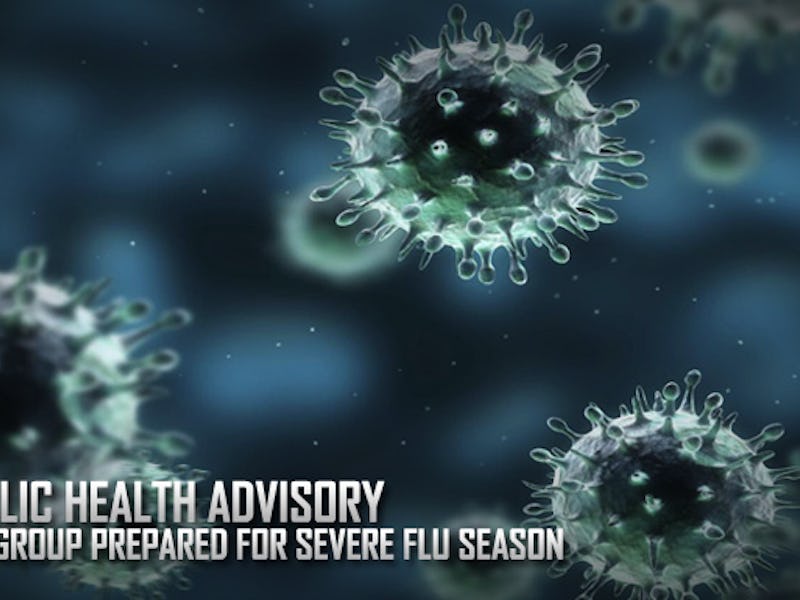Why the H3N2 ‘Aussie Flu’ Strain is Such a Brutal Virus
Skeptical? Just ask the Australians.

There has been a total of 30 pediatric deaths as a result of influenza this season, along with 8,990 confirmed flu-related hospitalizations since October 1, 2017. This year’s flu season is punching hard, with the flu spreading more extensively across the country compared to recent years. The reason all comes back to a little variant of the virus we call H3N2 — perhaps better known by its “Aussie Flu” moniker these days.
See, the northern and southern hemispheres trade off flu seasons, meaning Australia (and the rest of the southern globe) experienced its flu season last from, from May through October (peaking in August). And it was a doozy — according to the BBC, Australia’s 2017 flu season was one of the most difficult influenza epidemics the country had experienced in almost a decade.
That’s because the Aussie Flu is comprised of H3N2, an influenza strain that tends to impact people hard, especially the elderly and the very young. And for this reason, the Aussie flu poses more of a danger than other types of flu.
What makes it so potent? Part of it happens to be the fact that H3N2 is inherently more severe than other flu strains. It’s perhaps the most dangerous of the four common broad influenza strains. But another factor is that people tend to have had less exposure to H3N2 than other strains, so they haven’t really developed much immunity, either individually or as a community.
An FDA laboratory worker injects an influenza virus into an egg, where it will grow before being harvested.
More importantly, these factors are compounded by the fact that this year’s H3N2 actually mutated faster than expected. The initial vaccines that were developed to help protect people from the flu ended up being largely ineffective, since the virus managed to transform in a way to evade whatever immunity the vaccine already conferred. This season’s vaccine might only be about 30 percent effective against H3N2. In Australia, that efficacy (which used a different vaccination formulation) was a paltry 10 percent — hence the Aussie Flu name.
Additionally, H3N2 is just one of three main strains circulating this year (the other two are H1N1 and B). H3N2 was actually around last winter, and is part of every seasonal flu vaccine developed and administered to the public, so definitely not a shock that it’s making the rounds this season. It just happens to be making a bigger impact than usual, for all the aforementioned reasons coalescing at once.
It’s also worth noting that while the impact of this year’s flu is severe, it’s nothing health experts aren’t already used to. This season is actually pretty similar to the 2014-2015 flu season, in which H3N2 also dominated infections.
So what’s next? Well when it comes to the rest of this season, the CDC is working hard to give local communities the type of resources necessary to help make sure the vulnerable are well-taken care of, and doubling down on efforts to educate the public to make sure they’re practicing responsible hygiene habits.
Moving forward, however, this severe flu season should provide a very good reason for funding efforts to help increase vaccine efficacy and flu prevention. Many groups are working toward the development of a universal vaccine that covers all influenza strains — by targeting parts of the virus that are much more permanent and static. Others are looking toward developing vaccines that elicit a different immune response than we’re used to, and this might help reduce how severe flu infections can be.
Those solutions are a long way away, however. In the meantime, get your flu shot, wash your hands regularly, and stay home if you’re sick.
Hi there. You’ve made it to the bottom of this story! Speaking of which… we’re giving away an epic $5,000 ski trip to Banff, Alberta. Click here to enter! ⛷